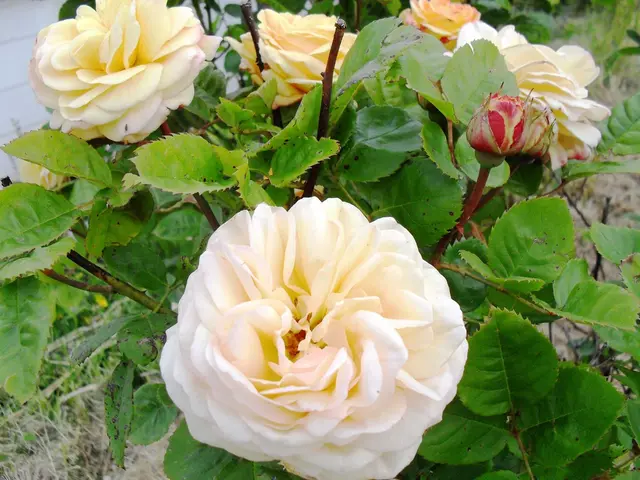Distinguishing Between Retro, Vintage, and Antique: Defining Each Term and Highlighting Their Differences.
In the realm of interior design, the terms antique, vintage, and retro are often used interchangeably, but each carries its unique charm and character. Here's a breakdown of these terms to help you make informed decisions when decorating your space.
Antiques, defined by their age, are pieces at least 100 years old. These rarer items are often ornate, crafted with traditional techniques, and hold value as collectible art or heirlooms. Their presence in contemporary interiors lends a sense of timelessness and sophistication through layered contrast when paired with modern furnishings. Antiques bring provenance, skilled craftsmanship, and superior quality to a room, making them appropriate for serious collectors who want to showcase their deep interest in a historical era.
Vintage items, on the other hand, are between 20 and 100 years old and represent a wide range of mid-20th-century styles. They feature characteristic colours and designs of their period, such as the bright, patterned aesthetics of the 1950s through the 1970s. Vintage pieces are prized for their quality and nostalgic appeal and can be mixed with modern design to create eclectic, personal spaces that respect the past while maintaining a fresh look.
Retro refers more to style inspired by past eras rather than age. Retro pieces may be newly made but designed to evoke nostalgia, especially from the 1970s with bold colours and geometric shapes. Retro is more about recreating or referencing a "look" from earlier times and is often used to make a fun, dynamic statement in interior design.
Understanding these differences can help interior designers choose appropriate furniture and décor to achieve desired atmospheres, from timeless classic to eclectic or boldly nostalgic. If you are simply wanting a nostalgic nod to the past, then retro items might fit the bill as they are likely easier to source and are much less expensive. However, if you are looking for significance and authenticity, then antiques are probably what you are after, as they can add a depth and richness to your decor with a patina that has taken years to cultivate.
Every space, even with all new furniture, usually has an element that would be considered retro. In the context of interior design, retro refers to items from or inspired by recent past decades, often the 1950s through the 1980s. For example, Cara Shahbandi used a mosaic floor tile in a bathroom, considering it retro due to the colours and diamond pattern. Antique trends, including tapestry, can serve as a starting point for interior design.
In conclusion, whether you choose antiques, vintage, or retro pieces for your home, each brings its unique charm and character. Antiques offer timeless elegance and grounding to modern interiors, while vintage pieces add colour, texture, and eclectic nostalgia with authentic period pieces that mix well with contemporary elements. Retro items provide a playful, eye-catching aesthetic inspired by nostalgia, suited for bold, eclectic, or themed interiors that celebrate specific past decades, especially mid-century and 70s trends.
Interior design enthusiasts may incorporate antique, vintage, or retro items to create unique and stylish spaces that reflect individual lifestyles. Antiques offer a sense of timelessness with their ornate craftsmanship, while vintage items showcase characteristic colours and designs of past eras, enhancing a room with a sense of history. Retro pieces provide a playful, eye-catching aesthetic inspired by nostalgia, suited for thosewho wish to embrace specific past decades, such as mid-century and 1970s trends, in their home decor.




